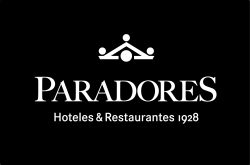Description
Parador de Salamanca - Hotel with views over the old city (4*)
The Parador de Salamanca, on the edge of the city, is in a strikingly attractive modern building on the left bank of the River Tormes, with stunning views across the river to the old town – a particularly fine sight at night when it is floodlit.
The Parador de Salamanca provides an elegant, spacious and comfortable base from which to explore this fascinating city. Tastefully decorated throughout with much use of marble, the hotel has a fine garden with a swimming pool and tennis court. The lounge areas as well as the majority of the bedrooms also offer fantastic panoramic views through their large windows.
The Salamanca Parador also houses modern amenities such as a sauna, a Turkish bath and a gym, making it the perfect place to unwind after a busy day exploring the delights of the city. The Parador in Salamanca is situated a short walk across the Roman bridge on the opposite side of the river to the city centre.
There is garage parking at this Parador.



Add a comment